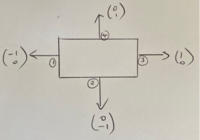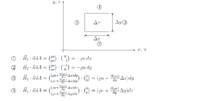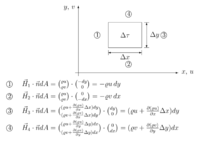You are using an out of date browser. It may not display this or other websites correctly.
You should upgrade or use an alternative browser.
You should upgrade or use an alternative browser.
Surface normal Vector
- Thread starter RT5
- Start date
Hey!Can you please explain how you calculated them?
As in if any surface is given ,in 2D, how do I get the normal vector in (dy or dx),2D vector form.
For example if I have lets say a vector at an angle in the above image(unlike perpendicular to the surfaces). What would be the normal vector of that vector.
As in if any surface is given ,in 2D, how do I get the normal vector in (dy or dx),2D vector form.
For example if I have lets say a vector at an angle in the above image(unlike perpendicular to the surfaces). What would be the normal vector of that vector.
There are several things I should make clear:
1. I did not calculate these. (As the appearance suggests) this is just a version of the solution to your problem, in which the normal directions have been corrected.
It is available here: https://www.aia.rwth-aachen.de/vluebfiles/excercises/18/link/exercise1.pdf
2. I know nothing about fluid dynamics. I simply recognise that the directions of the normal vectors are wrong in the solution you have and are correct in the new version.
That is just a matter of simple vector geometry:

The unit normals to each surface are as shown, and I have simply written them in component form.
That is the extent of my knowledge, I am sorry.
However, again it would appear there is a problem with this second solution. If you look at the dot products in 3 and 4, the middle expressions do not equate to the expressions on the right. I guess that the dy and dx in the first brackets should not be there. (Again this is a guess, without knowledge of fluid dynamics).

I'm sorry I could not be of more help.
1. I did not calculate these. (As the appearance suggests) this is just a version of the solution to your problem, in which the normal directions have been corrected.
It is available here: https://www.aia.rwth-aachen.de/vluebfiles/excercises/18/link/exercise1.pdf
2. I know nothing about fluid dynamics. I simply recognise that the directions of the normal vectors are wrong in the solution you have and are correct in the new version.
That is just a matter of simple vector geometry:

The unit normals to each surface are as shown, and I have simply written them in component form.
That is the extent of my knowledge, I am sorry.
However, again it would appear there is a problem with this second solution. If you look at the dot products in 3 and 4, the middle expressions do not equate to the expressions on the right. I guess that the dy and dx in the first brackets should not be there. (Again this is a guess, without knowledge of fluid dynamics).

I'm sorry I could not be of more help.


